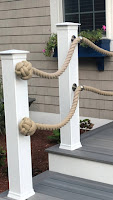Ropes are a safety net. While keeping you safe, they must withstand dynamic loads, abrasion, and passing through hardware. Arborist rope is commonly referred to as tree climbing ropes.
What material makes up arborist rope?
Typically, polypropylene-polyester, nylon-polyester, polyester-polyester, or any other blend of materials is used to make ropes for tree rigging operations.
150 feet of climbing rope with 12 strands and a 1/2-inch diameter.
Approximately 8,000 pounds in tensile strength. T
This rope is ideal for tree climbing because it has little stretch and excellent knot retention.
WHAT ARE THE DIFFERENCES AMONG SYNTHETIC FIBERS?
The first synthetic fibre that was frequently utilized in ropes was nylon. Nylon is still employed in dock and anchor lines because of its reasonable strength (it was much stronger than the natural fibers it replaced), which allows it to bear shock loads.
Since polyester fiber was developed, ropes manufacturers have created products as durable as nylon while exhibiting far less stretch and wet-strength loss. Polyester ropes, especially polyester double braids, rose to the top as the standard by which all other ropes were judged. Polyester is still commonly utilized as a cover material for high-performance or high-modulus double braids and is still recognized as a good fiber for many marine applications.
What Should I Understand About Dock Lines?
The Best dock lines' primary function is to secure your boat to the dock while it is there., which is why they must be durable, elastic (to absorb shock loads), and resistant to decay, abrasion, and UV radiation. As a result, nylon combines all of these attributes well and is the best option. You might assume that dock lines require strength if unfamiliar with them. However, when exploring dock lines, this is only one of many characteristics you should be on the lookout for.
Conclusion
Although there are numerous ways to knot a dock line, you don't actually need to get too creative. Usually, this is one of the simplest ways to go about it:
Grab the line's end and fully 360° wrap it around the cleat's bottom.
Do a "figure eight" by passing the rope through both ends and looping it over the top of the cleat.
Finally, for added security, hook it to the cleat.
Please don't leave the remaining dock line dangling; instead, wrap it and place it at the dock.
So.choose your docklines wisely from a manufacturing pioneer the Rwropes.












